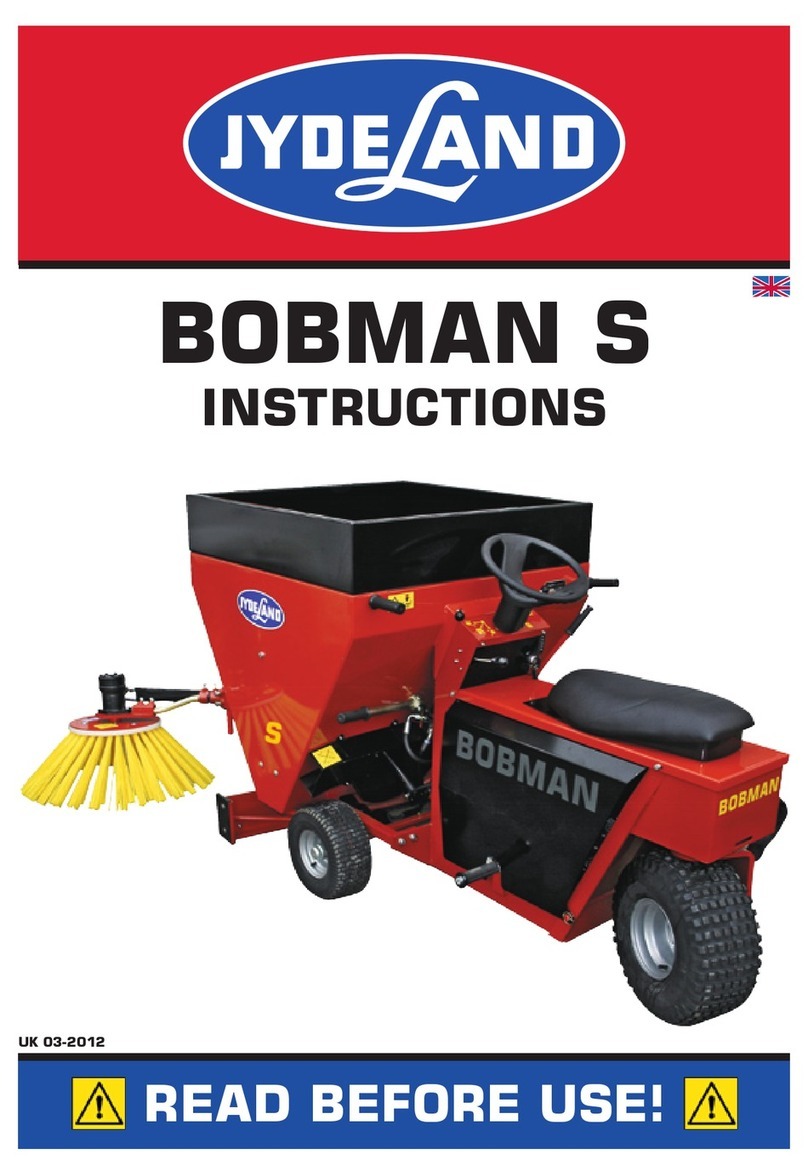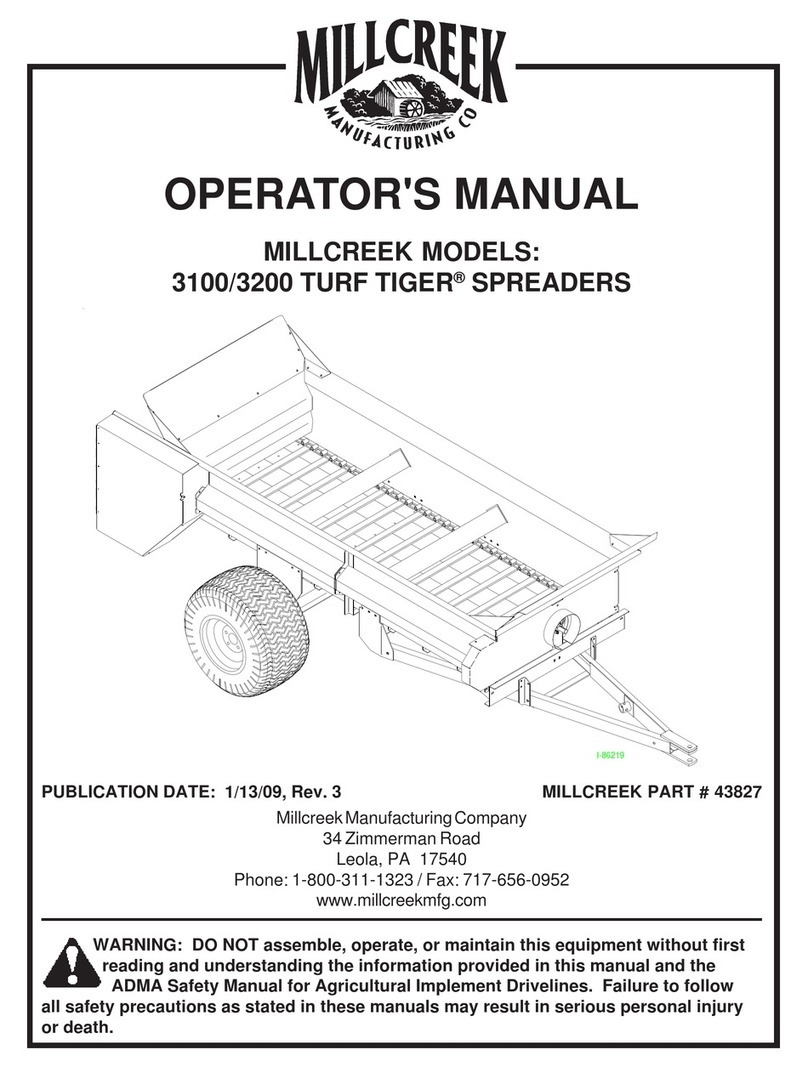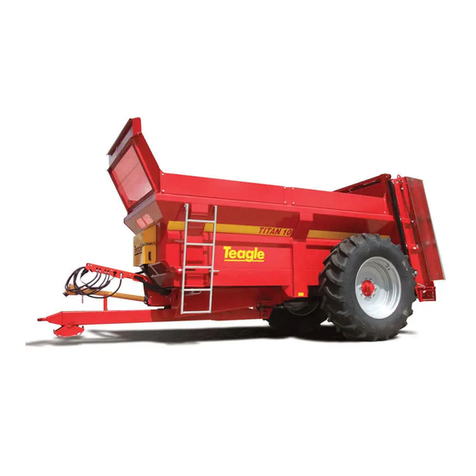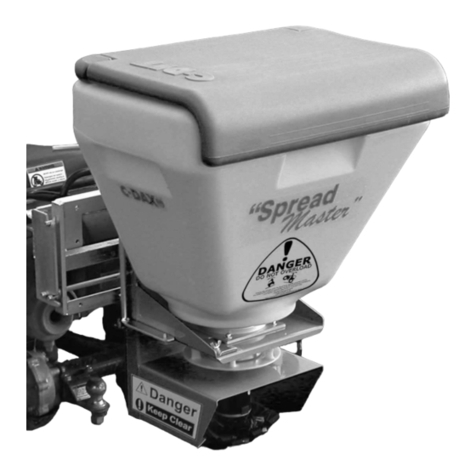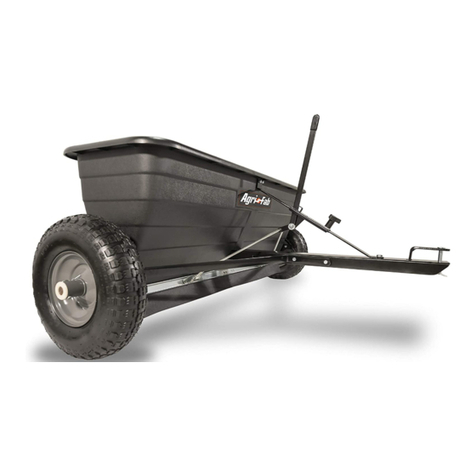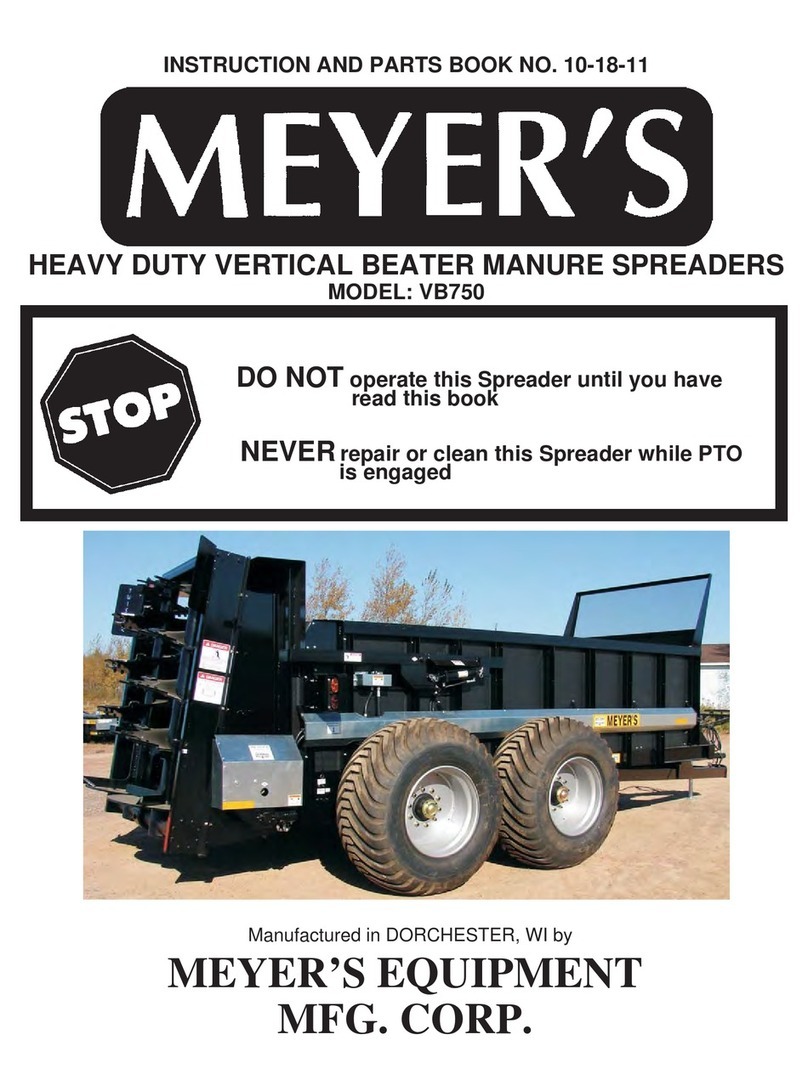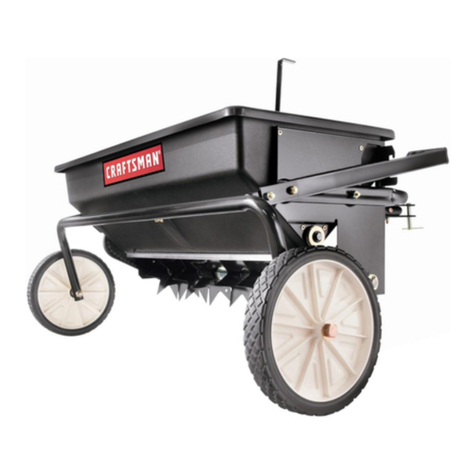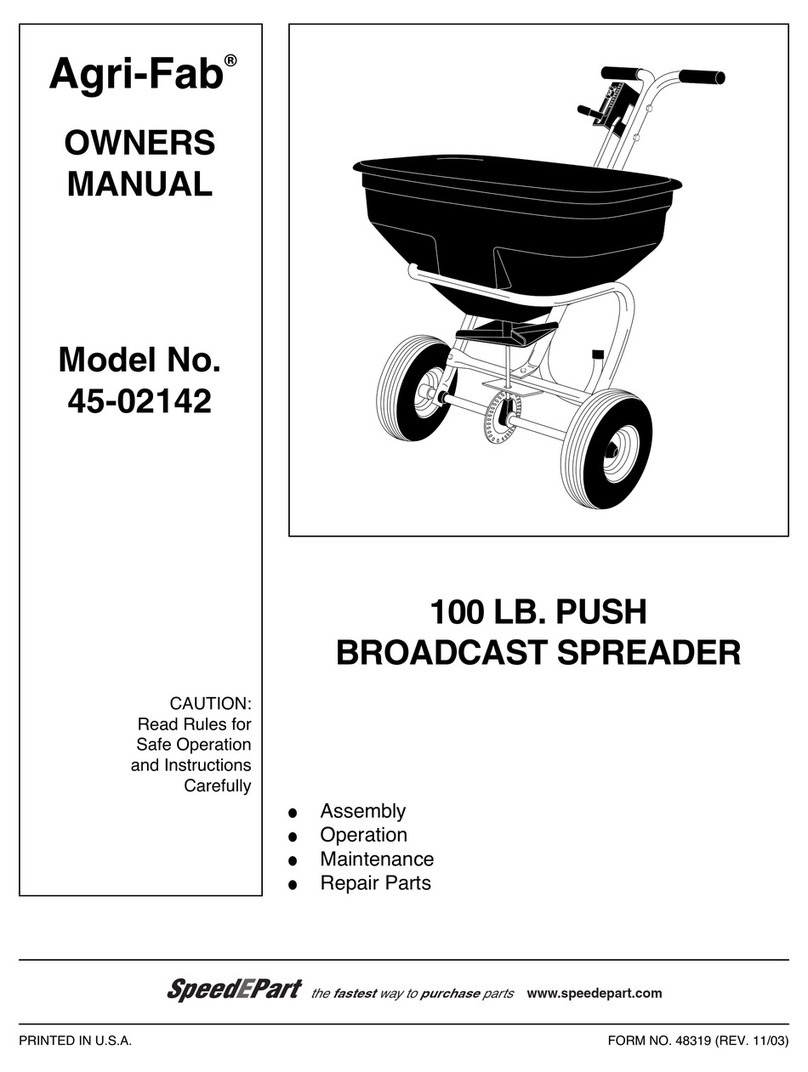EQUIFAB P185 User manual

Guide d’utilisation
Equifab
Épandeur en polyéthylène Épandeur en inox.
P185 et P210 S100, S175, S200 et S300
POIDS MOYEN DES ABRASIFS
MATÉRIEL POIDS (VERGE CUBE)
Sel (Sec) 2500 lb
Sable / Sel (50/50) 3000 lb
ATTENTION :
Il est très important de ne pas surcharger votre véhicule. Vérifier avec le manufacturier
la capacité de charge du camion avant de remplir l'épandeur.
Mesures de sécurité
Il est très important de lire, de comprendre et d’appliquer ces mesures de sécurité avant
d'utiliser l'épandeur.
En respectant ces règles, vous diminuerez les risques de blessures ainsi que les bris
mécaniques.
1- Lire ce document en entier avant d'utiliser votre épandeur.
2- Assurez-vous que toutes les composantes de sécurité sont bien fixées sur l'épandeur
avant de mettre en opération.
3- S'assurer qu'il n'y ait personne autour de l'épandeur avant de le mettre en fonction.
4- Ne pas dépasser la capacité de charge de votre véhicule. Si vous avez des doutes,
contactez votre concessionnaire.
5- Si vous devez ajuster, laver ou lubrifier votre épandeur, assurez-vous que la source
de courant est déconnectée (batterie) avant de commencer les travaux.
6- Ne pas monter sur l'épandeur pendant qu'il est en fonction.
7- S'assurer que l'épandeur est fixé de façon sécuritaire au camion (boulonné). Important:
Consulter un installateur compétent avant toute utilisation. Utiliser des tendeurs avec
chaînes.
8- Ne jamais utiliser votre épandeur s'il est défectueux.
9- Ne jamais laisser du matériel dans la cuve pour une longue période. Le matériel peut
geler et endommager l'épandeur.
10- Toujours déconnecter la batterie avant de remplacer des composantes mécaniques ou
électriques.
11- Vérifiez les boulons d'assemblage régulièrement pour s'assurer qu'ils sont bien fixés.
Owner’s Manual
Equifab
Polyethylene spreader Stainless steel spreader
P185 and P210 S100, S175, S200 and S300
AVERAGE MATERIAL WEIGHTS
MATERIAL WEIGHT (PER CUBIC YARD)
Salt (Dry) 2500 lb
Sand / Salt (50/50) 3000 lb
WARNING
Do not overload, do not exceed your truck capacity. If you don’t know your truck capacity, verify with
the manufacturer before filling the spreader.
SAFETY PRECAUTIONS and WARNINGS:
It is very important to read and to understand these safety precautions and warnings. By doing so,
you will avoid any risks of injuries or mechanical break downs.
1- Read this entire owner’s manual before operating this spreader.
2- Make sure that all safety components are securely mounted and in place before operating this
spreader. Make sure that the spreader is sitting flat on the truck body.
3-Make sure that no one is around the spreader spray area before starting or operating this
spreader.
4- Do not over-load your vehicle beyond its capacity. If there are any questions, contact the
vehicle manufacturer.
5- Do not adjust, clean, lubricate or do any work on the spreader without first turning off the power
source (battery).
6- Do not climb on or in the spreader during operation. Do not ride on the spreader while the
vehicle is in motion.
7- Make sure that the spreader is securely fastened to the vehicle. Important: Installation must be
done by a qualified person. Use turnbuckles with chains to fix the spreader in the truck.
8- Do not operate a spreader that is in need of maintenance or repairs.
9- Never leave any material in the hopper for extended period of time. Material may freeze and
seriously damage the spreader.
10- Always disconnect the battery before removing or replacing mechanical or electrical
components.
11- Verify regularly the mounting bolts for tightness

Spreader operation and maintenance
START-UP TRANSMISSION
Check the oil level. Normally, the gear box contains 625ml of oil. If the oil level is low, oil must
be added.
It may take few hours of operation, under full load, for the gears to reach their maximum
effectiveness. The gear may, if necessary, be put to work under full load immediately.
However, it is best, for the ultimate life of the gears, to be run under gradual increasing loads.
Reasonable precaution should be taken to avoid overload in the early stage of use.
Temperature rise on the initial run will be higher than the temperature eventually reached
after the gear is fully run in.
CHANGING LUBRICANT
Shut off the power source before inspection.
After 100 hours of operation, the oil in the gear box should be drained, flushed, and refilled
with proper oil. Thereafter, oil should be changed at least every 2500 operating hours or
every 6 months, whichever occurs first. Never mix two different types of oil. Be sure to drain
and wash the gear box before using another type of oil.
MAINTENANCE
Shut off the power source before inspection. The oil level, in the gear box unit should be
checked at least once a month. False reading will be avoided by examining the oil level on
stationary gears.
To maintain the ventilation of the unit, the breather hole in the filler plug (air-vent) should be
kept clear at all times.
Inspect regularly set screws and the mounting bolts for tightness because loose fasteners
can cause misalignment and excessive wear.
SELECTION OF LUBRICANT
Our gear boxes are filled with 75W90 semi synthetic oil. This type of oil is recommended
where a wide temperature range is expected. Also, this type of lubricant permits to extend
the period between drains. This is due to a better resistance to thermal degradation or
oxidation.
BEARINGS LUBRICATION
The purpose of the bearing lubrication is to prevent direct metallic contact between rolling
parts. Lubrication is essential to prevent premature degradation. So, it is very important to
lubricate the bearing regularly. Please take note that if you put too much grease into the unit,
the bearing could overheat. At the end of the season, you have to grease the bearings one
last time to evacuate the water inside the bearing.
Opération et entretien
MISE EN MARCHE DE LA TRANSMISSION
Vérifiez le niveau d'huile. Normalement, le réducteur contient 625 ml d'huile
(jusqu'au centre de l'arbre de sortie.) Si le niveau est bas, il faut en ajouter.
Un réducteur n'atteindra son efficacité maximale qu'après quelques heures
d'opération à plein régime. De même, certaines précautions devraient être prises afin
d'éviter les surcharges dans les premiers temps de sa mise en fonction.
Il est à noter que les élévations de température se révèleront plus importantes au
cours des premiers temps d'utilisation.
CHANGEMENT D'HUILE
Coupez l'alimentation d'énergie avant de commencer.
Après les 100 premières heures d'opération, il convient de retirer l'huile usée du
réducteur, de le nettoyer et de le remplir avec de l'huile appropriée.
Par la suite, le changement d'huile se répétera toutes les 2500 heures d'opération ou
à tous les 6 mois, selon la première éventualité.
Ne jamais mélanger différents types d'huile. Vidangez et effectuez un nettoyage
soigné, si un changement de type d'huile est désiré.
ENTRETIEN
Coupez l'alimentation d'énergie avant l'inspection.
Le niveau d'huile devra être vérifié au moins une fois par mois, et corrigé au besoin.
Une lecture prise pendant le fonctionnement du réducteur conduira à une mauvaise
évaluation du niveau réel.
Ne jamais mélanger différents types d'huile. En cas d'incertitude, changez d'huile
comme indiqué ci-dessus.
Pour conserver une bonne ventilation du système, on veillera à la propreté de la prise
d'air.
Une inspection périodique des boulons de montage et des vis de retenue doit être
effectuée pour maintenir un bon alignement, et pour éviter toute usure prématurée.
CHOIX DU LUBRIFIANT
Nos boîtes d'engrenage contiennent de l'huile de type 75W90 semi-synthétique. Ce
lubrifiant est conçu pour fonctionner sous d'importants écarts de température. De
plus, les lubrifiants synthétiques permettent d'augmenter la durée de vie entre les
changements d'huile. Ceci grâce à une meilleure résistance à la dégradation
thermique ou à l'oxydation.
Lubrification des roulements
Pour fonctionner avec fiabilité, les roulements (roulements à palier, roulements à
palier tendeur) doivent être convenablement lubrifiés, de façon à éviter un contact
métallique direct entre les éléments roulants. Vous devez donc lubrifier les
roulements régulièrement.
Cependant, il est à noter qu'un excès de graisse entraîne une augmentation de la
température de fonctionnement. Donc, il est important de ne pas trop graisser les
roulements. À la fin de la saison, vous devez graisser les roulements une dernière
fois pour vous assurer qu'il n'y a pas d'eau à l'intérieur des roulements.

CONVEYOR CHAIN LUBRICATION
When you receive your new spreader, it is not necessary to lubricate the chain.
However, when you will store the machine at the end of the season, it is crucial to
lubricate it properly to prevent chain link from seizing. One way is to remove the
chain and place it in a lubricant (waste oil or fuel could be used)
ELECTRIC SYSTEM
When you install the electric spreader, it is very important to put dielectric grease in
every connection. Also, during the season, make sure to inspect the connectors
regularly and add dielectric grease when needed. Also, when season is over, all
connections need to be well cleaned and lubricated with dielectric grease to
prevent corrosion and rust during the storage period.
POLYETHYLENE HOPPER
We believe it could be a good idea to cover the tub with a tarp during summer
season. With that extra care, the color of the spreader will remain the same for
several years. Make sure the spreader is sitting flat during the storage period and
do not stack anything on it.
#765002 On/Off switch
Lubrification de la chaîne de convoyeur
Lors de l'achat de votre épandeur, il n'est pas nécessaire de lubrifier la
chaîne. Cependant, lorsque vous remiserez votre équipement à la fin de la
saison, vous devrez lubrifier la chaîne correctement. Il est conseillé
d'enlever complètement la chaîne de l'épandeur et de la remiser dans un
contenant rempli d'huile.
Entretien du système électrique
Lors de l'installation de l'épandeur, vous devez vous assurer de mettre de
la graisse diélectrique dans toutes les connections. Ceci évitera les
problèmes causés par l'eau saline qui peut s'infiltrer dans les connections.
De plus, durant la période d'utilisation, vous devez vous assurer que les
connecteurs sont lubrifiés en tout temps. À la fin de la saison, il faut
nettoyer les connecteurs et les lubrifier avec cette même graisse.
Cuve en polyéthylène
Nous croyons que vous devriez couvrir la cuve avec une bâche durant le
remisage (été). Avec cette attention particulière, la cuve conservera sa
couleur d'origine pendant plusieurs années. Afin d'éviter toute déformation
de la cuve durant la période d'entreposage, respecter les consignes
suivantes: l'entreposer sur une surface plane et ne rien mettre sur
l'épandeur.
# 765002 Interrupteur On/Off



Figure 3-Stainless spreader S175, S200 and S300
Figure 3 Épandeur en inox S175, S200 et S300

Figure 4-Poly spreader P185 and P210
Figure 4 Épandeur en poly P185 et P210
This manual suits for next models
5
Table of contents
Popular Spreader manuals by other brands

BUNNING
BUNNING MK4 75 - B3105 INSTRUCTION & SPARES MANUAL
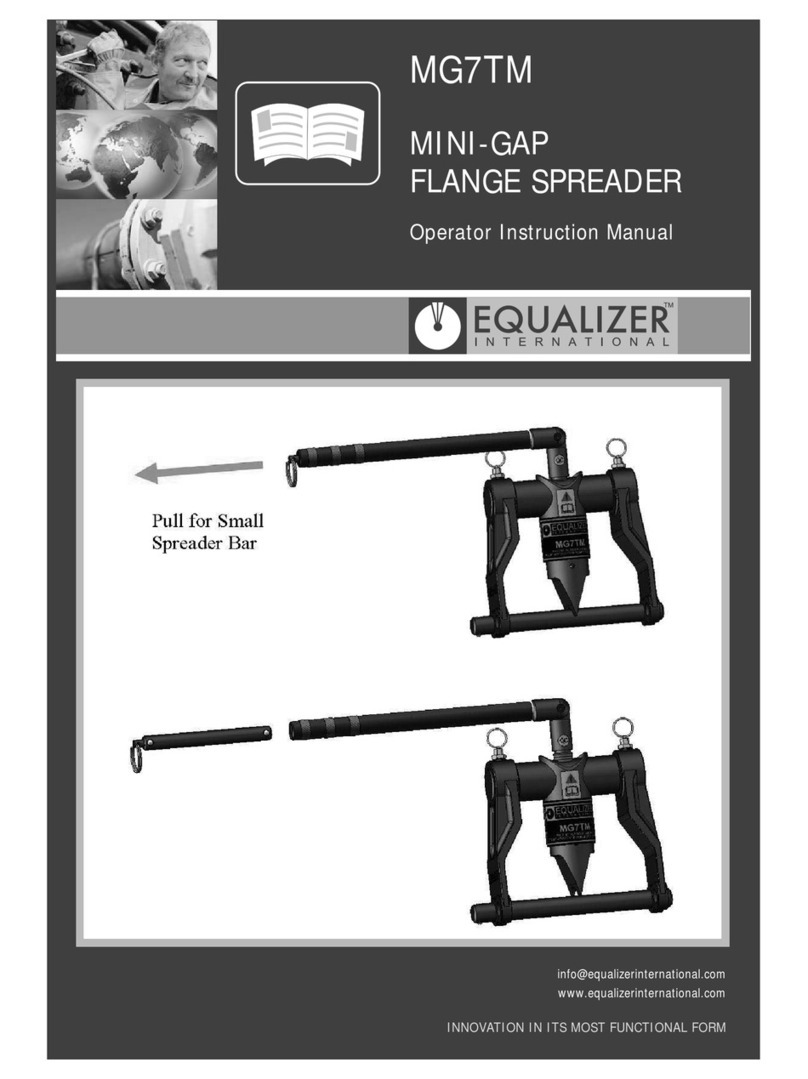
Equalizer International
Equalizer International MG7TM Operator's instruction manual
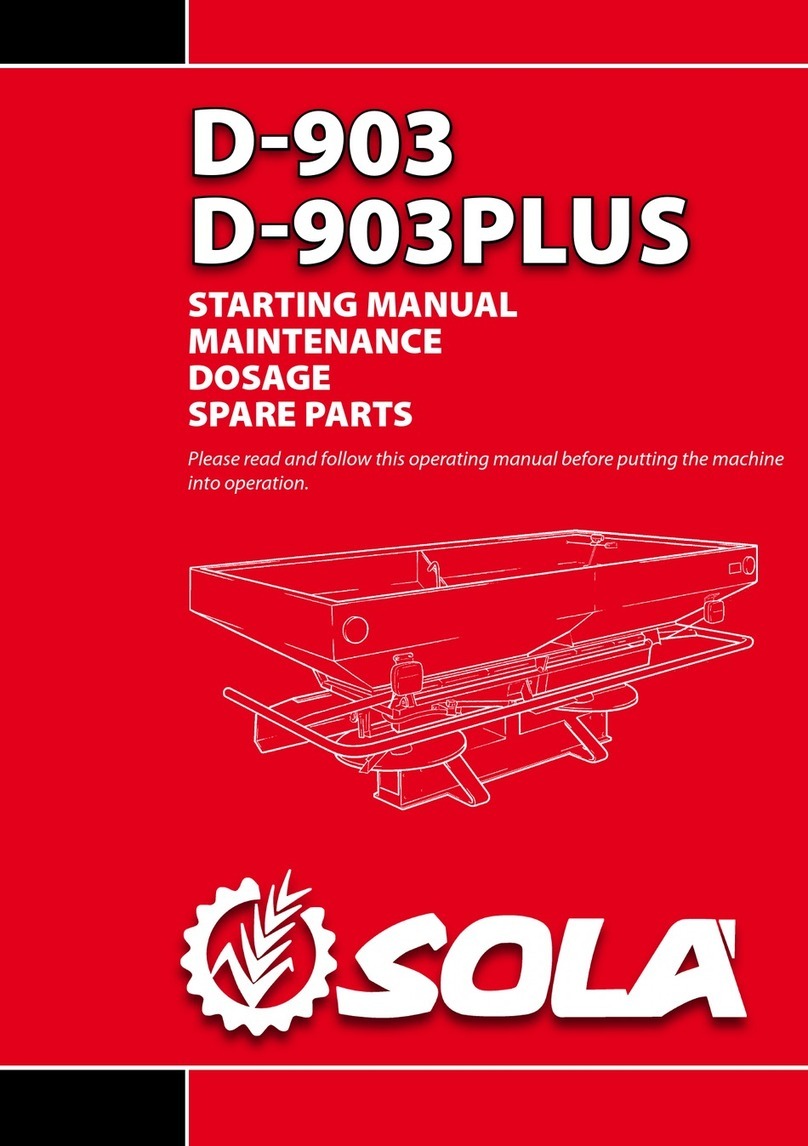
Sola
Sola D-903 Starting manual

SPYKER
SPYKER SPY200T-1P Operator's manual

BE Ag & Industrial
BE Ag & Industrial MFS350T Operations & parts manual
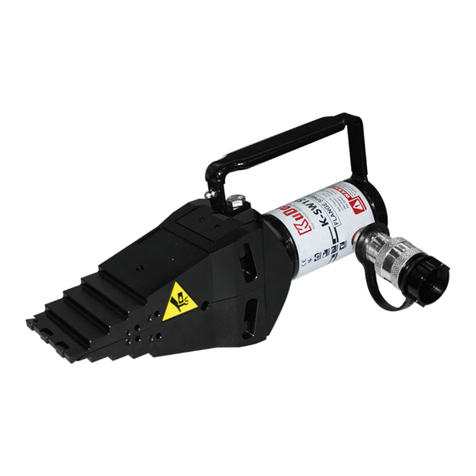
KUDOS
KUDOS K-SW15TE SAFE OPERATION & MAINTENANCE INSTRUCTIONS

